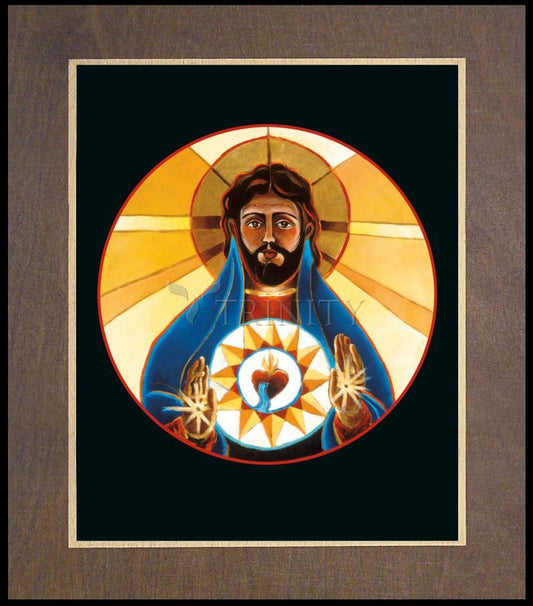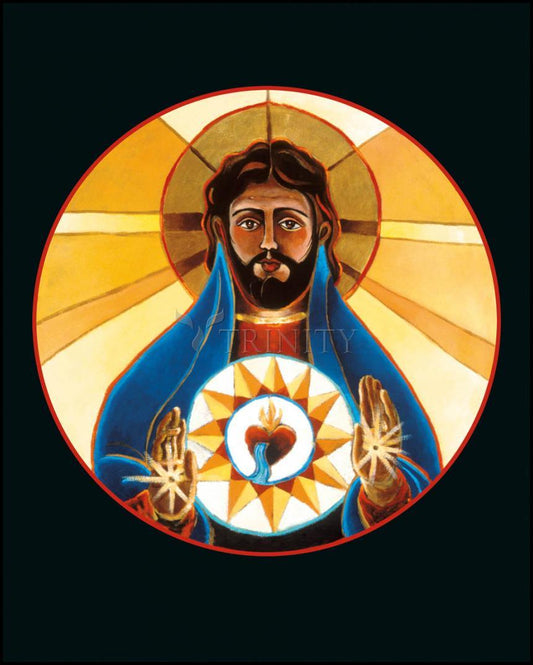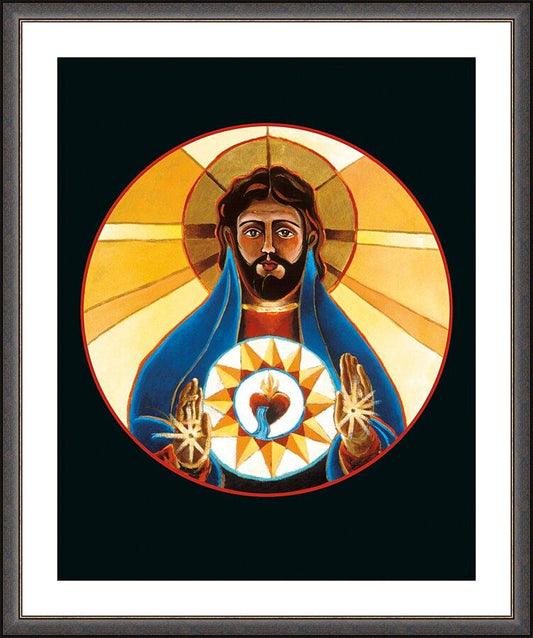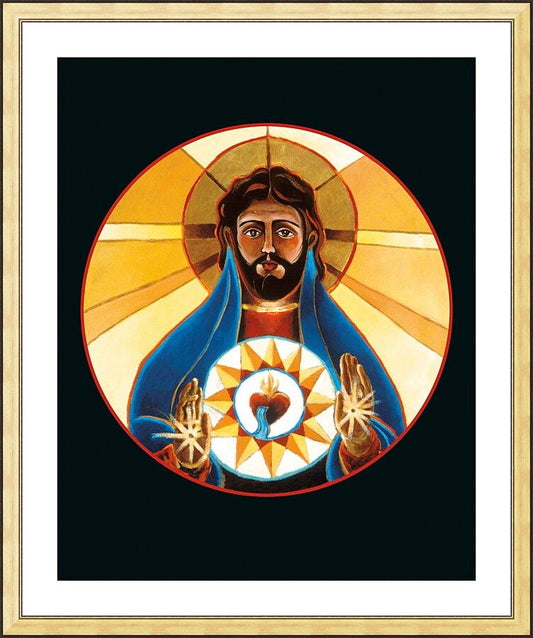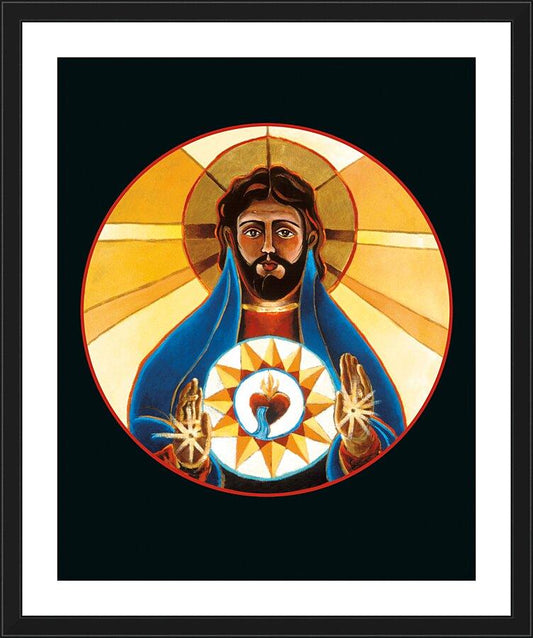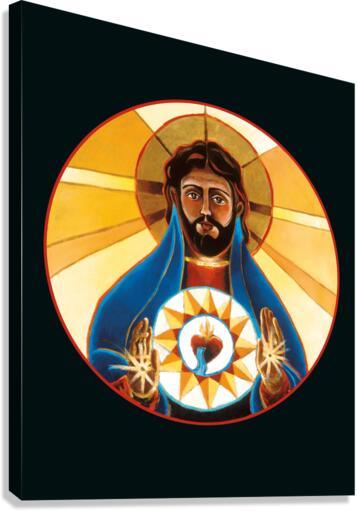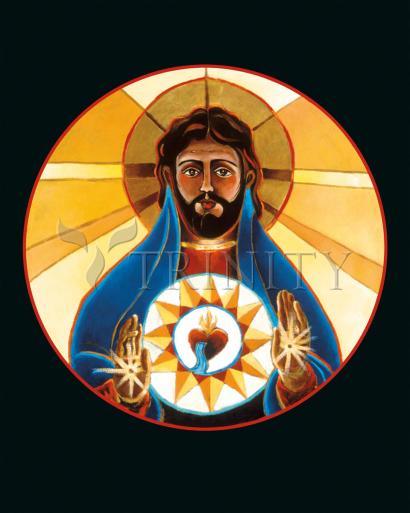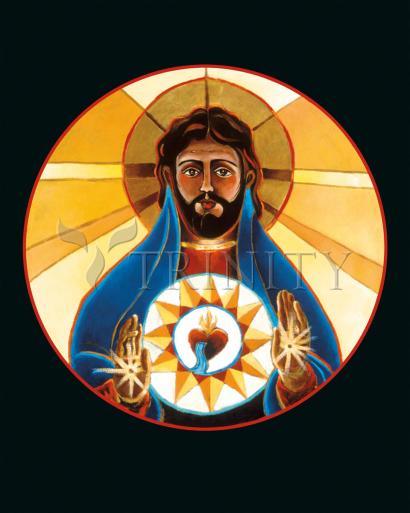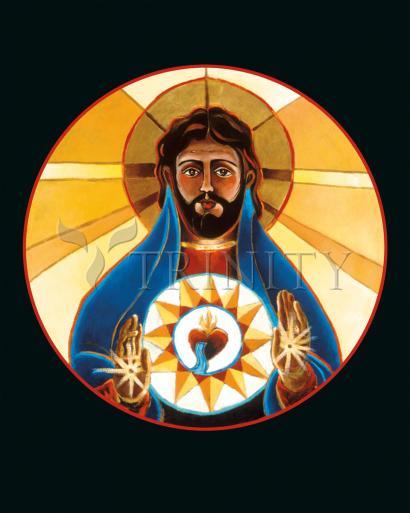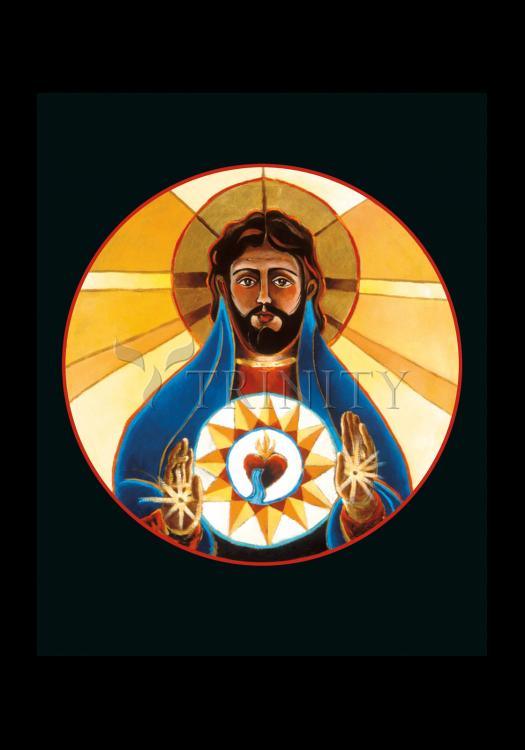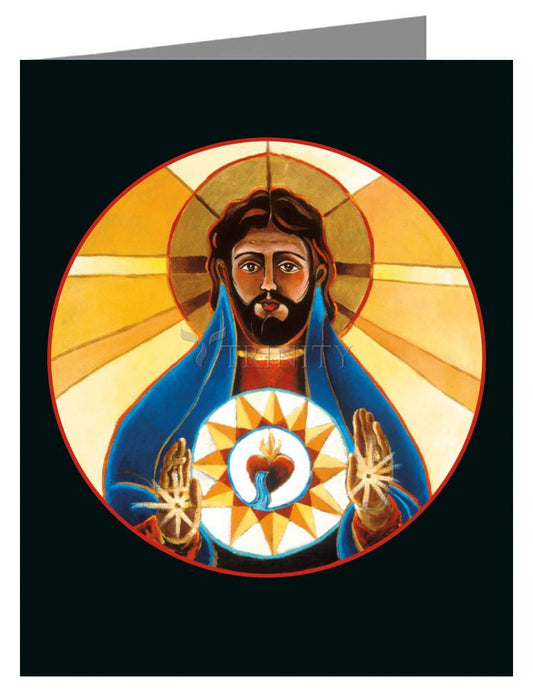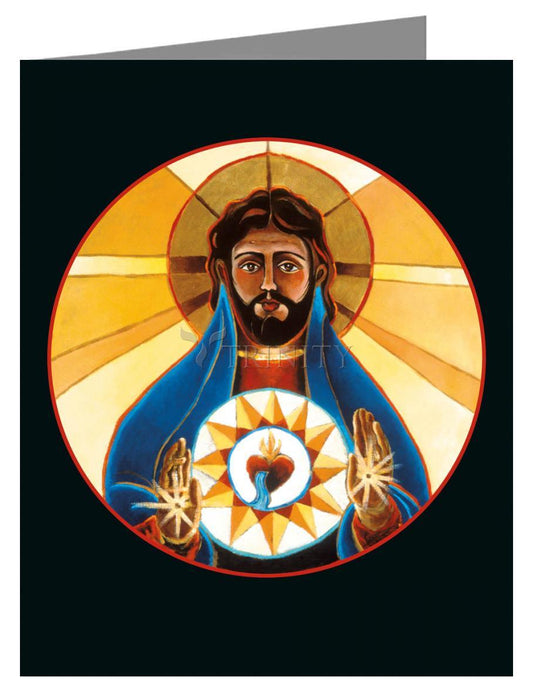Early devotion
Historically the devotion to the Sacred Heart is an outgrowth of devotion to what is believed to be Christ's sacred humanity. There is nothing to indicate that, during the first ten centuries of Christianity, any worship was rendered to the wounded Heart of Jesus.
The revival of religious life and the zealous activity of Saint Bernard of Clairvaux and Saint Francis of Assisi in the twelfth and thirteenth centuries, together with the enthusiasm of the Crusaders returning from the Holy Land, gave a rise to devotion to the Passion of Jesus Christ and particularly to practices in honor of the Sacred Wounds.
Devotion to the Sacred Heart developed out of the devotion to the Holy Wounds, in particular to the Sacred Wound in the side of Jesus. The first indications of devotion to the Sacred Heart are found in the eleventh and twelfth centuries. The devotion arose in the fervent atmosphere of the Benedictine or Cistercian monasteries, in the world of Bernardine thought, although it is impossible to say with certainty what were its first texts or who were its first devotees.
Saint Bernard (d.1153) said that the piercing of Christ's side revealed his goodness and the charity of his heart for us. The earliest known hymn to the Sacred Heart, "Summi Regis Cor Aveto" is believed to have been written by the Norbertine, Blessed Herman Joseph (d.1241) of Cologne, Germany. This hymn begins: "I hail Thee kingly Heart most high."
From the thirteenth to the sixteenth centuries, the devotion was propagated but it did not seem to have developed in itself. It was everywhere practised by individuals and by different religious congregations, such as the Franciscans, Dominicans, and Carthusians. Among the Franciscans the devotion to the Sacred Heart of Jesus has its champions in Saint Bonaventure (d. 1274) in his Vitis Mystica ("Mystic Vine"), B. John de la Verna and the Franciscan Tertiary and Saint Jean Eudes (d. 1680). Bonaventure wrote: "Who is there who would not love this wounded heart? Who would not love in return Him, who loves so much?" It was, nevertheless, a private, individual devotion of the mystical order. Nothing of a general movement had been inaugurated, except for similarities found in the devotion to the Five Holy Wounds by the Franciscans, in which the wound in Jesus's heart figured most prominently.
In the sixteenth century, the devotion passed from the domain of mysticism into that of Christian asceticism. It was established as a devotion with prayers already formulated and special exercises, found in the writings of Lanspergius (d. 1539) of the Carthusians of Cologne; the Louis of Blois (Blosius, 1566), a Benedictine and Abbot of Liessies in Hainaut, John of Avila (d. 1569) and St. Francis de Sales, the latter belonging to the seventeenth century.
The historical record from that time shows an early bringing to light of the devotion. Ascetic writers spoke of it, especially those of the Society of Jesus (Jesuits). The image of the Sacred Heart of Jesus was everywhere in evidence, largely due to the Franciscan devotion to the Five Wounds and to the Jesuits placing the image on the title-page of their books and the walls of their churches.
Nevertheless, the devotion remained an individual, or at least a private, devotion. The first to establish the theological basis for that was Polish Jesuit Kasper Drużbicki (1590-1662) in his book Meta cordium - Cor Jesu (The goal of hearts - Heart of Jesus). Not much later Jean Eudes (1602"1680) made it public, gave it an Office, and established a feast for it. Père Eudes was the apostle of the Heart of Mary, but in his devotion to the Immaculate Heart there was a share for the Heart of Jesus. Little by little, the devotion to the two Hearts became distinct, and on August 31, 1670, the first feast of the Sacred Heart was celebrated in the Grand Seminary of Rennes. Coutances followed suit on October 20, a day with which the Eudist feast was from then on to be connected. The feast soon spread to other dioceses, and the devotion was likewise adopted in various religious communities. It gradually came into contact with the devotion begun at Paray-le-Monial, and the two merged.
Saint Lutgarde
According to Thomas Merton, Saint Lutgarde (d.1246), a Cistercian mystic of Aywieres, Belgium was one of the great precursors of the devotion to the Sacred Heart of Jesus. A contemporary of St. Francis, she "... entered upon the mystical life with a vision of the pierced Heart of the Savior, and had concluded her mystical espousals with the Incarnate Word by an exchange of hearts with Him." Sources say that Christ came in a visitation to Lutgarde, offering her whatever gift of grace she should desire; she asked for a better grasp of Latin, that she might better understand the word of God and sing his praise. Christ granted her request and Lutgarde's mind was flooded with the riches of psalms, antiphons, readings and responsories. However, a painful emptiness persisted. She returned to Christ, asking to return His gift, and wondering if she might, just possibly, exchange it for another. "And for what would you exchange it?" Christ asked. "Lord, said Lutgarde, I would exchange it for your Heart." Christ then reached into Lutgarde and, removing her heart, replaced it with His own, at the same time hiding her heart within His breast.
Saint Mechtilde
Saint Mechtilde of Helfta (d.1298) became an ardent devotee and promoter of Jesus' heart after it was the subject of many of her visions. The idea of hearing the heartbeat of God was very important to medieval saints who nurtured devotion to the Sacred Heart. Mechtilde reported that Jesus appeared to her in a vision and commanded her to love Him ardently, and to honor his sacred heart in the Blessed Sacrament as much as possible. He gave her his heart as a pledge of his love, as a place of refuge during her life and as her consolation at the hour of her death. From this time Mechtilde had an extraordinary devotion for the Sacred Heart, and said that if she had to write down all the favors and all the blessings which she had received by means of this devotion, a large book would not contain them.
Saint Gertrude
Saint Gertrude the Great was an early devotee of the Sacred Heart of Jesus. Book 2 of the Herald of Divine Love vividly describes Gertrude's visions, which show a considerable elaboration on the hitherto ill-defined veneration of Christ's heart. St Bernard articulated this in his commentary on the Song of Songs. The women of Helfta"Gertrude foremost, who surely knew Bernard's commentary, and to a somewhat lesser extent the two Mechthilds"experienced this devotion centrally in their mystical visions.



